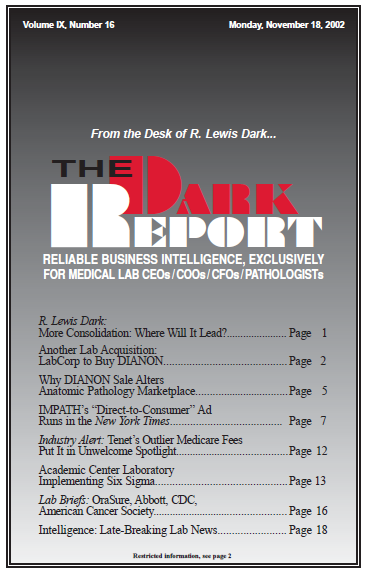CEO SUMMARY: Two pioneering advertising campaigns launched in September. Both Myriad Genetics and IMPATH targeted consumers with advertisements about diagnostic testing. In each case, the most vocal response to the advertising came from within the medical community. Within the pathology profession, IMPATH’s full-page advertisement in the New York Times Sunday Magazine was not well-received by …
“Direct-to-Consumer” Ad Runs in New York Times Read More »
To access this post, you must purchase The Dark Report.


